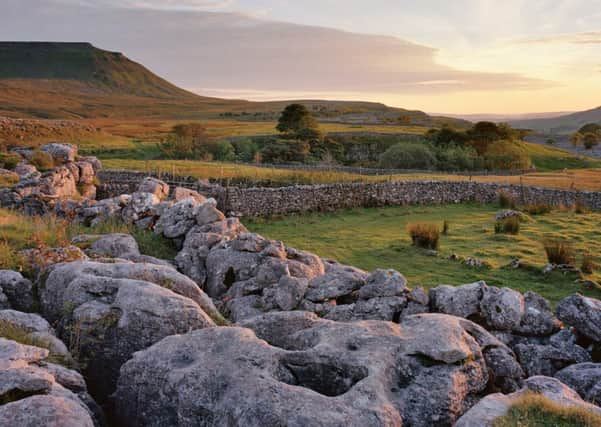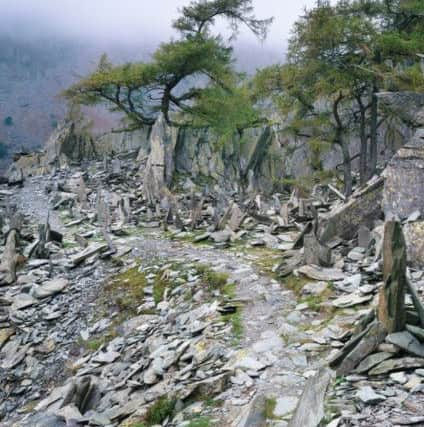Capturing the lay of the land


The quarter final between England and Spain in Euro 96 was a scrappy affair. Even for those who were there at Wembley as Three Lions echoed around the stadium and who watched, hearts in mouth, as Terry Venables’ men proved that just sometimes England could win on penalties, it wasn’t a classic. Yet for Tim Parkin that match proved to be life changing and he isn’t even a football fan.
“I was round at the house of some friends and they really wanted to watch the game but there was something wrong with their satellite aerial. I foolishly said I’d go see if I could fix it. I’m not quite sure what happened, but I was standing at about the height of the first floor when I felt myself falling backwards. I landed on the grass, but the impact was pretty severe.
Advertisement
Hide AdAdvertisement
Hide Ad“I remember my parents coming to see me in hospital. They’d booked into a pub nearby and had told the landlord what had happened. He leant them his portable television so I could watch the rest of the competition. I was lying there in hospital, thinking, ‘I don’t even really like football and look where it’s got me.’”


The accident left Tim with three fused vertebrae in his back. His recovery took around three years although he is still reliant on painkillers now. However, it would also trigger a complete change of career and he says now gave him a much more laidback approach to life.
At the time of his accident, Tim was doing a PhD in computational mathematics at Manchester University. He’d indulged his creative side by setting up a music magazine which saw him talent-spotted as an A&R man, but to everyone who knew him it seemed certain that it was computers where his talent and career lay. That it didn’t was down to a small piece of advice given to Tim by his doctor.
“Eventually, he told me that my back was fine, or at least as fine as it was ever going to be, but that I really needed to do some exercise and he suggested walking would be about the best thing I could do. If I’m honest I wasn’t really the outdoors type and so I thought, ‘Right, well if I’m going to have to go for long walks I need a distraction’.”
Advertisement
Hide AdAdvertisement
Hide AdHe bought a digital camera, reckoning that if he was taking pictures along the way it would make the miles seem just that little bit shorter.
“When I was growing up, the family who lived opposite were members of the local camera club and I’d dabbled a bit as a kid, but then computers took over my life and that was it. But when I picked up a camera again, it just felt right and every time I went out I was taking dozens and dozens of images. I guess it became a bit of an obsession.”
That was in 2004 and, two years later, to celebrate his 40th birthday, his family booked him a place on a photographic workshop on the Orkney Isles. It was with David Ward and Richard Childs, who unbeknown to Tim were both specialists in large format cameras – think the leather concertina bellows and black cloth of the earliest photographic studios.
“I turned up there with my little digital camera and there were these guys using cameras which looked like they’d come straight out of a museum. It was fascinating and when I heard the sound they made when they took each picture I was hooked.”
Advertisement
Hide AdAdvertisement
Hide AdHe’s right, there’s something about the almost clockwork click of these old school cameras which is irresistible. It wasn’t long before Tim had swapped his digital camera for one similar to those used in the 1860s but made by a Japanese enthusiast who, after struggling to find exactly the right equipment to photograph Buddhist temples, decided to build his own.
“It’s a work of art in itself. Inevitably when you go out with one of these cameras people think you’re a bit eccentric, but it’s honestly changed my life. It’s made me slow down.”
When you’re working with a large format camera there really is no option. When the film for one single picture costs up to £4.50, the days of snapping hundreds of images on each walk are long gone.
“The documentary photographer Dorothea Lange one said, ‘The camera is an instrument that teaches people how to see without a camera’. She was absolutely right. The ease of digital photography and the fact you can take so many pictures without worrying about cost of film or whether they are any good at not in fact makes you more disconnected from your surroundings. With these cameras you have to be pretty sure that you’re going to take a good image before you press the button, so it makes you look at the landscape much more closely. You have to choose your composition and then wait to see if the light is going to be kind to you. Sometimes it is, sometimes it isn’t.
Advertisement
Hide AdAdvertisement
Hide Ad“Sunsets and sunrises are the crack cocaine of digital photography. You can guarantee that wherever the sun is, you’re in the wrong place, panicking that even if you drive 100mph an hour you’ll miss the killer shot. Large format photography is much more about subtlety.”
In the early days, Tim says it could take him up to an hour to shoot a single picture. Now it can take as little as 10 minutes, but he’s in no rush.
“I remember one of the first shoots I did was at Brimham Rocks and it’s probably still one of my favourite pictures,” he says, calling up the image on his computer – his camera may be antiquated but he hasn’t reverted to a complete Luddite. Like much of his portfolio, there’s a touch of the fantastical about the familiar scene. “It looks a bit Lord of the Rings, doesn’t it? It’s because of the richness of the colour separation which you just don’t get with digital cameras.”
Having fallen in love with photography, Tim gave up his day job in 2009 to set up On Landscape, an online magazine with fellow Yorkshire landscape photographer Joe Cornish. That helps pay the bills, but he still tries to go out once or twice a week to add to his own collection of work.
Advertisement
Hide AdAdvertisement
Hide Ad“I love the Wolds and places like Millington Woods partly, I think, because it is undervalued, but the gentle rolling valleys also really capture the mists and the frosts and I also spend a lot of time in the Lake District and Scotland where you can get such dramatically different scenery in just a few square miles.
“Yes, it’s great exploring different countries but if I was told I could never go abroad again I wouldn’t be too bothered. As long as Scotland doesn’t shut off its borders I think there’s probably more than enough to keep me occupied over here.”
Having moved with his wife, Charlotte, from Leeds to a spacious home in a pretty East Yorkshire village, Tim’s passion for photography has grown into its surroundings. Just off the minimally furnished conservatory there’s one large room where it’s impossible to move without treading on a lens or backing into a scanner. Before the digital age, this equipment would have cost £500,000, but Tim picked most of it up on eBay for a fraction of that cost.
Ryedale Folk Museum is currently home to a collection of Tim’s work and he admits choosing the final selection was not easy. “In the end I think about 80 per cent of the photographs I included were taken in autumn. I guess it’s most photographers’ favourite season just because of the variety and depth of colours although I am starting to really like winter.”
Advertisement
Hide AdAdvertisement
Hide AdTim reckons there’s no more than 200 regularly practicing large format specialists in this country and together they have formed a small but perfectly formed photographic community. They also share the philosophy that it’s quality not quantity which counts. “There are some days when I will come back without having taken a single picture. It doesn’t matter. It’s the walk which is important. The old me would have laughed at the idea that you could enjoy just being outdoors for its own sake, but I guess sometimes you never know the path that life will take you.”
Tim Parkin, Ryedale Folk Museum, to March 23. Tim will be giving a talk at the museum on landscape photography on March 13 at 2pm. Places are free of charge, but should be booked in advance. 01751 417367, www.ryedalefolkmuseum.co.uk